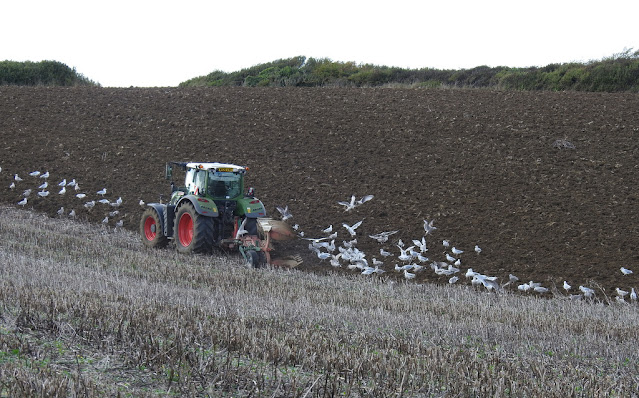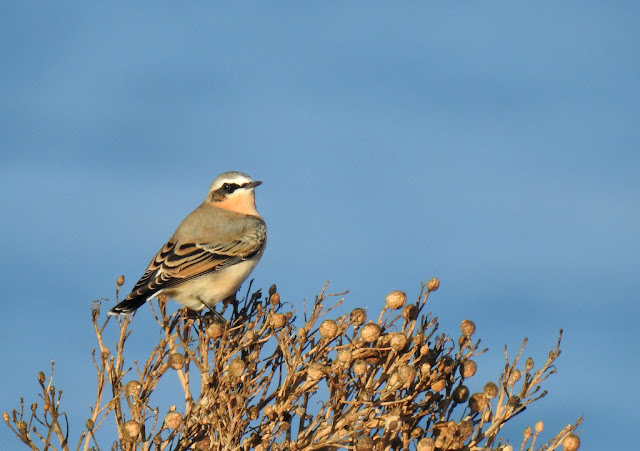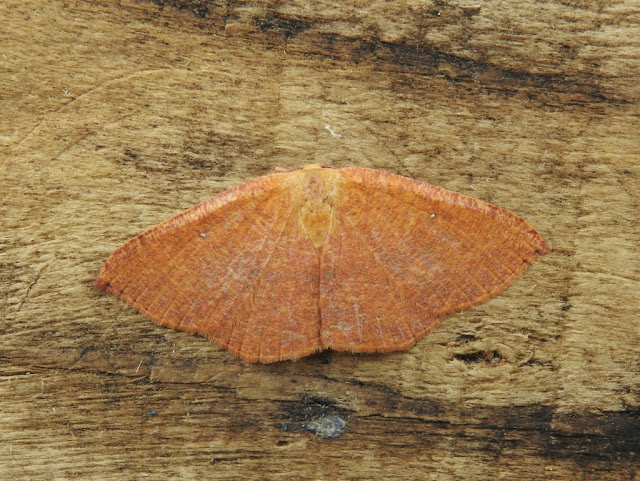This afternoon I walked from West Bay to Burton Bradstock and back, for one Spotted Flycatcher, a handful of Chiffs and about 12,000 steps. Thankfully bird of the day had happened several hours earlier. Though technically it was bird of the night. This...

|
|
Ring Ouzel |
That's my third nocmig Ring Ouzel, following one in October 2020 and another in April last year. The sonogram is interesting, with the first note being what looks like a multi-spiked trill. A nice example of one of those times when the sonogram reveals a lot more than the actual sound. Apart from lacking the sharp 'chack' quality of the other two notes, it doesn't sound much different to my ears. See what you think...
There was one other notable nocmig occurence last night...
A lovely loud Water Rail, always a treat.
Anyway, I suppose it's about time I dealt with this slightly frustrating nocmig event from 10th September. A single 'tew' call, at 01:48. I suspected it might be an Ortolan Bunting, but kind of hoped it wasn't. Living in Dorset as I do, Ortolan has always been on my radar. I could be wrong, but it strikes me that every single Dorset nocmigger who's been at it a while eventually bags one. Or several. However, if (when?) it happened here, I wanted a nice series of 'plik' calls, not a single poxy 'tew'. 'Plik' (though I've always written it 'tlip') is the call I normally associate with Ortolan Bunting, and it is one of their principal nocturnal notes also.
But no. I get this...
To be fair, it sounds okay for Ortolan, and a number of fellow nocmiggers have said as much. The sonogram looks good too. Here it is, compared with a number of 'tew' notes nicked off the Sound Approach Ortolan Bunting page...
Just for fun, here is a mash-up of my 'tew' with several Ortolans off Xeno Canto. My bird starts and finishes it, and is repeated again between every other 'tew'...
So there we are. Having investigated at some length I am finally satisfied that it was an Ortolan Bunting. Satisfied, but not happy. In fact I am so underwhelmed that I cannot be bothered to do anything with it, certainly in terms of submitting the record. I shall pencil it in on the garden list, and await a proper 'plik'-er. And that's that.
Recent moths have been rather samey. Apart from Lunar Underwings (with up to 64 at a time!) there have been just a few other clients at the trap. As I type, there is a Barred Sallow safely potted in the garage, but that is the first new species for a while. Best of the recent visitors was probably this...

|
|
Another lovely Blair's Mocha. |
But this was nice too...

|
|
Common Wainscot. |
A few days ago I was at Cogden, and just across the road from the car park spied a sizeable gang of gulls attending a plough. As the tractor passed they would dive in and scrabble about, nabbing whatever they could find, then wait patiently for it to turn around and pass the other way, whereupon they would briefly go mental again. It was fun sifting through them all, but ultimately fruitless. In fact it has struck me that recent birding efforts have largely been just that. Which can only mean there is a biggie waiting for me round the next corner.
I hope.

















































